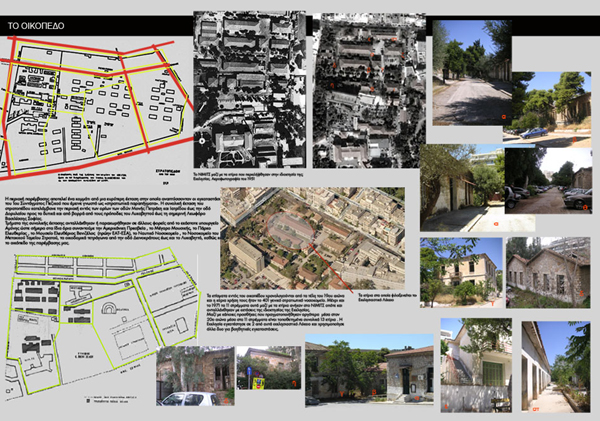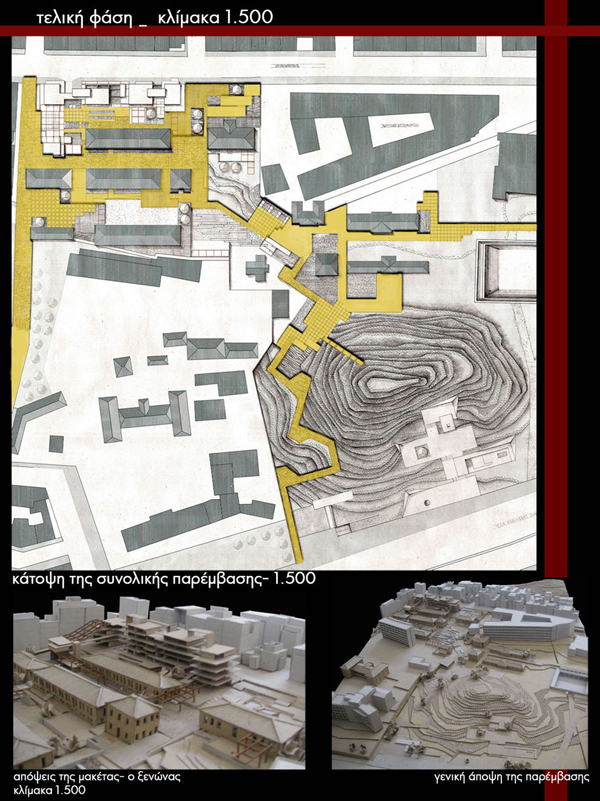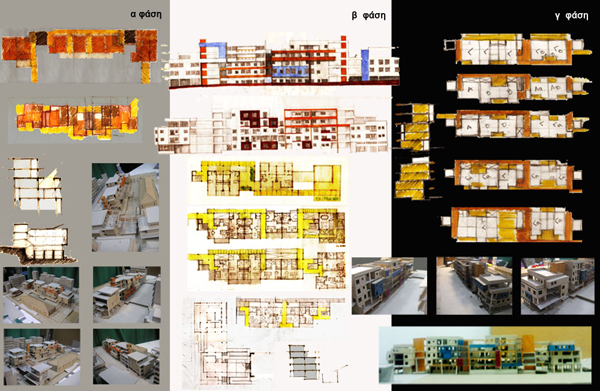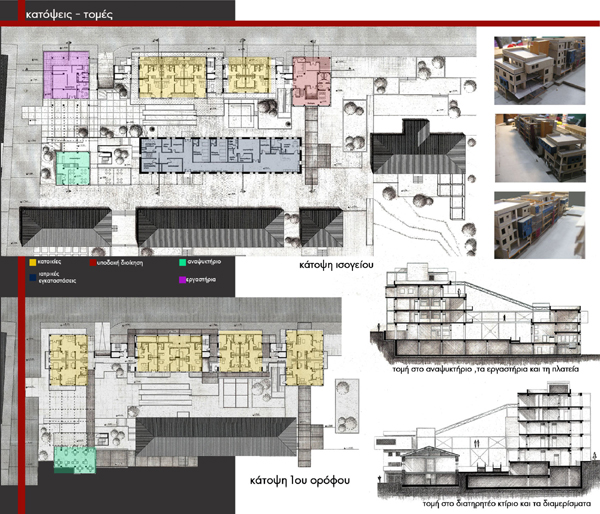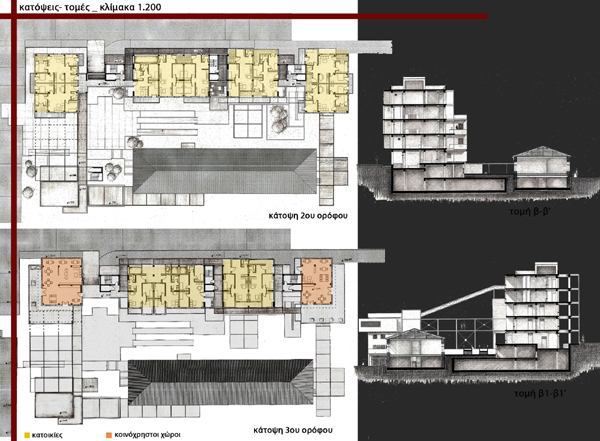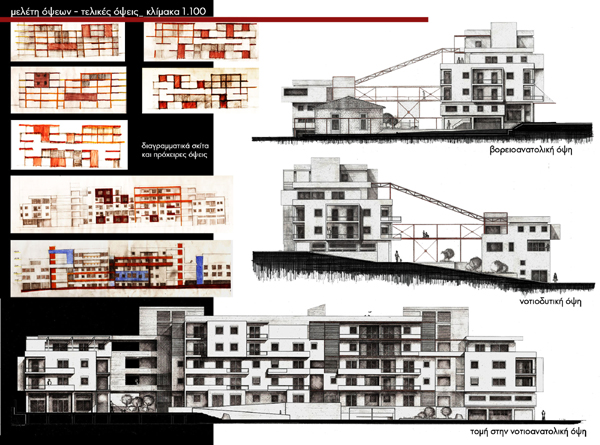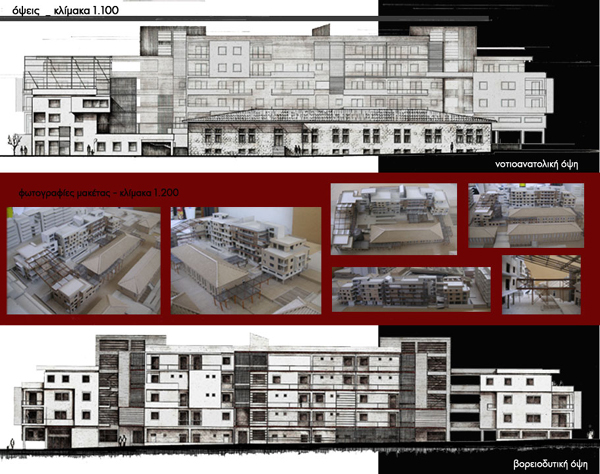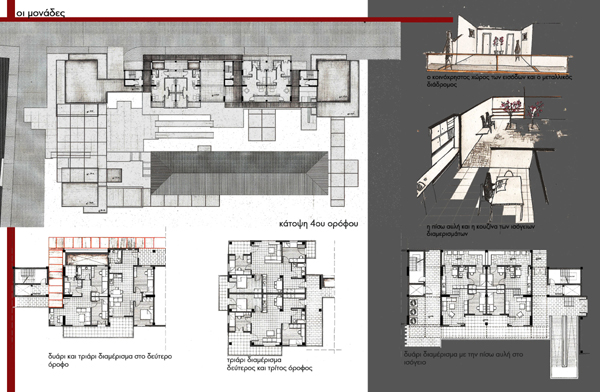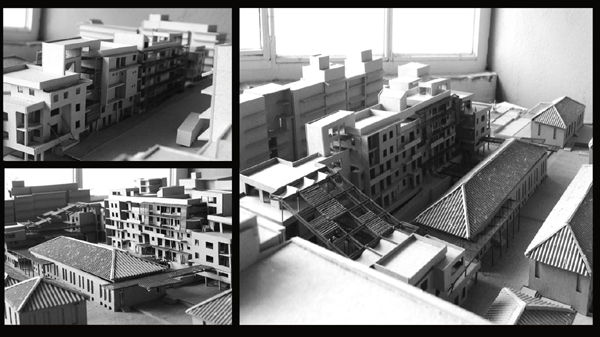STUDENTS PROJECTS
PROJECTS 2011
14 March, 2012
Rehabilitation guest house and regeneration of the surroundings in Eleftheria’s park, Athens
This dissertation aims to complete the research in questions that were raised during our studies in Architecture School of Xanthi.
Students : Kalkounou Panagiota, Mourouti Iris
Supervisors: Amerikanou E, Keventsidis K, Patrigios G.
Demokritus University of Thrace, School of Engineering, Department of Architectural Engineering
Presentation Date: April 1, 2011

This dissertation aims to complete the research in questions that were raised during our studies in Architecture School of Xanthi, and mainly concern the role of architecture in the restructuring of society, through the designing of buildings that will work as active socio-political places. It is about a research experiment, during which a use of controversial character (rehabilitation-recovery), enters an elite area, "a fillet land", which in general would cause discomfort due to marketing circumstances, but mainly because of the specific character of the neighborhood. The plot of land in which the scenario of the dissertation project takes place, is in the downtown of Athens, a city center that suffocates from civilization points - such as Music Concert Hall, Museum of Eleftherios Venizelos- extruding the uncomforting or incompatible uses, thus creating an image of an idyllic urban landscape, away from the social reality. In case such a scenario came to life, it would outcome with a series of very interesting results concerning the social consequences of the built architecture.
The plot of land
The intervention area consists a part of a larger area in which the establishments of the 1st Infantry Regiment were developed, known as "military barracks". The intervention plot of land is limited in 11 acres, which are conceived today by the Church High School, surrounded by Dinokratus Str, Iatridu Str, the Navy Hospital and the Army Hospital. In this area, there are 13 buildings included, estimated to the late 19th century, built for the use of the 401 military hospital. Today, two of the accommodate the Church High School, two of them cover ancillary need and the rest are abandoned.
The strongest motive that challenged us to deal with this particular plot, was its enclosed character in contrary to its centered spot in the urban fabric. Though the existence of Eleftheria's Park could lead to the conclusion that it is the link between the residential area and downtown, however, it remains a static part of green between the limits of the hospitals and the Concert Hall. In addition , though the plot of intervention presents a special architectural interest, because it still includes the building stock of the old military hospital, it remains closed and sets limits towards the surrounding buildings, so most of the residents are unaware of its existence, thus the effortless accessibility to Eleftheria's Park and Vasilissis Sofia's avenue is excluded. Our suggestions, on the emergence of the spot and the necessity of integration of the green spaces in general, impose the expropriation of small parts of the military and navy hospitals' property and their integration in the designing of the path that will link Dinokratus Str with Vasilissis Sofia's avenue. This path is based on the shaping of squares and green areas with the switch of postures and motions, through the existing uses, so their consolidation and emergence is achieved. Regarding the plot and its building stock, our suggestion was mainly influenced by their simultaneous designation as a listed landmark and localized the internal paths between them.
The building
The choice of the use of the building was driven by the dominated uses of the area (residence and hospitalization), as well as the initial main use - hospitalization- of the landmarked buildings. So, in an effort to use the specific area for residence, even temporarily, and in order to integrate it to the character of the neighborhood, we chose it to work as a guest house for the patients and their escorts. In addition, the temporary housing , gives a neighborhood character to the plot, and to its extension to Eleftheria's Park, strengthening our intention to highlight the area, in order to activate it with its reuse as a part of the neighborhood.
The building program is as follows :
- Public uses
Entrance, reception, administration, activity workshops, recreation - dinner club : 810m ² .
- The guest house totally includes 32 apartments, each one of them intended for the accommodation of the patient and his escorts.
Apartments for 2,3,4 people and communal living rooms : 2800m².
- Ancillary uses :
Stores, electromechanical systems, underground parking : 2430m².
- Supportive medical facilities (listed buildings)
Basic medical uses
Laboratories and wards : 406m².
Ancillary uses: 337m².
- Total : 6783m².
The main idea of the building is based on internal communication and dealing with the apartments as individual units but act as a collection point, at semi-open defuse. The goal was to move to place on a path - continuing from the loose drive in the park- and not as a throughput nature of linking stairways and apartments. On the other hand, apartments are designed based on a formula which takes variations and extensions in a way that allows variety in standardization. The choice of privacy in a building of social habitation is not common, but because of the specificity of users regarding their sensitive physical and psychological situation, it was judged as necessary. However, communal spaces are not skipped, and either work as individual areas or areas inbetween the apartments. In addition, the apartments share by two, common entrance landings. The motion paths consist the characteristic functional and morphological element of the complex. They are detached from the main body to ensure the direct illumination of the apartments , they are treated as individual elements and finally differentiated from the building material of the complex.
The apartment units
The apartment units were treated from the beginning as pairs, cooperating in common grid, or in entrance level. In the common grid are either placed the humid area, so that their verticality is achieved, or the common semi -opened spaces. The ground floor apartments, were solved with the creation of elevation from the street (Dinokratus), to degradation and retreat in a grid, so we could create a backyard and insure their privacy.
The final study of the dissertation project was held in scale 1: 500 (master plan - urban design) in general plan and model, with focus on the main building program in plans, sections, views and models in scale 1:200.
